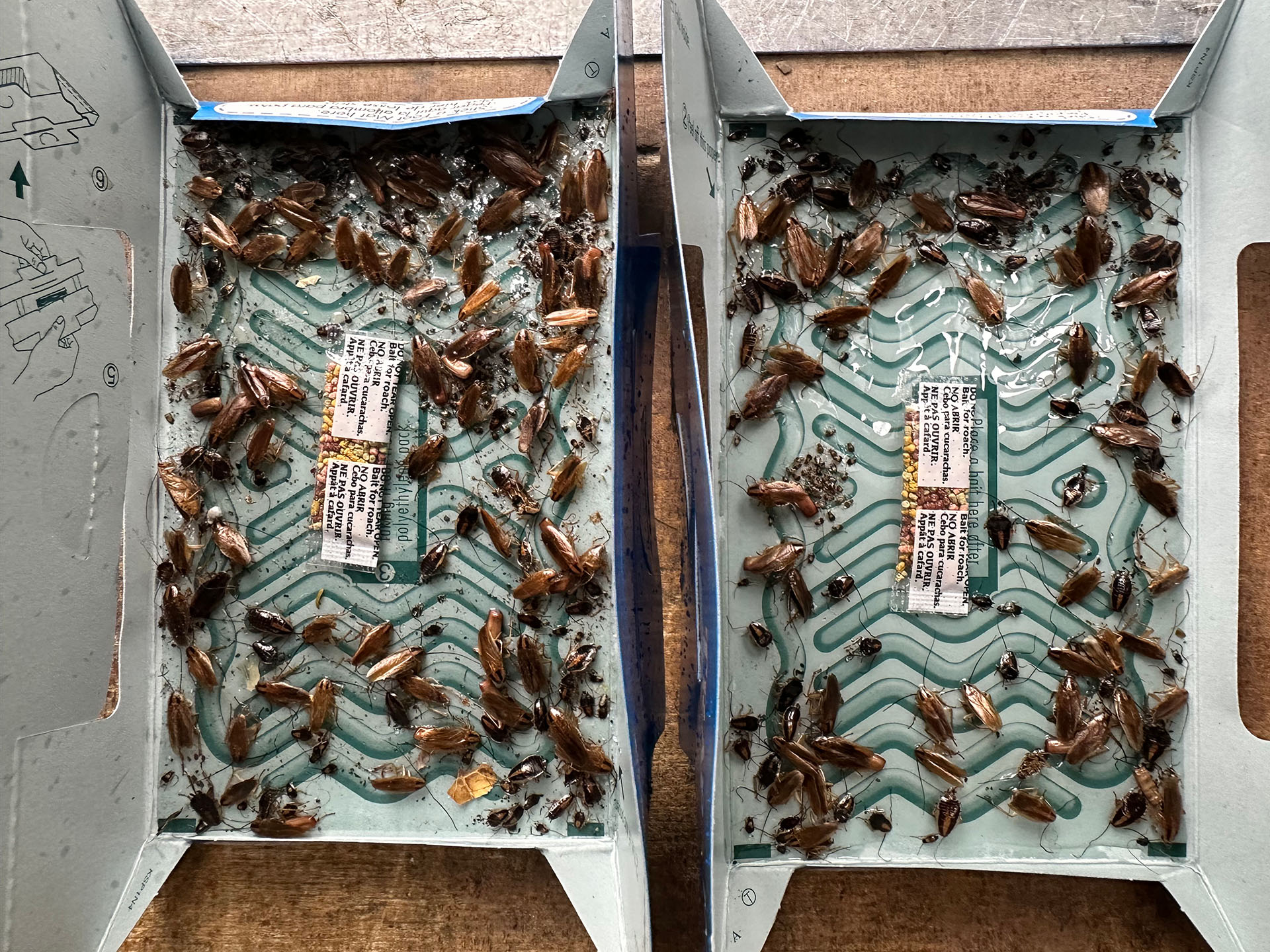Cockroach Infestation in a Northampton Student Property
At iX5 Pest Control, we take pride in our expertise to tackle even the most challenging pest infestations. This detailed case study blog outlines our response to a severe German cockroach infestation in a Northampton student property. With thorough inspections, a strategic treatment plan and consistent monitoring, we were able to resolve a deeply ingrained pest problem.
The Infestation: A Widespread Cockroach Problem
The property in question, owned by a rental company managing several student properties in Northampton, housed four students. The tenants reported cockroaches throughout the house, with sightings in every room, including on kitchen work surfaces. Such a widespread infestation indicated that the problem had been ongoing for a significant period.
How Cockroaches Invade Properties
Cockroaches typically enter homes through:
- Suitcases and bags – often after foreign travel.
- Cardboard boxes or food packaging – potentially from infested shops or warehouses.
Once inside, cockroaches can quickly establish a foothold, especially in environments conducive to their survival and reproduction. This particular infestation was likely caused by one of these methods, although it was impossible to determine the exact origin.
The Scale of the Problem
Our inspection revealed hundreds of visible cockroaches throughout the property. The sheer scale of the infestation pointed to long-term neglect, and the actual numbers would have been much greater as cockroaches usually hide away in cracks and crevices. Cockroaches had infiltrated every room, including:
- Cracks and crevices
- Electrical conduits
- Pipe runs
- Gaps in floorboards
- Spaces behind kitchen units and appliances
A Hotspot for Breeding
One room was significantly worse than the others. This area was in a state of disarray, with:
- Dirty crockery
- Leftover food
- General uncleanliness
Such conditions create a perfect breeding ground for cockroaches, providing ample food and shelter.
Understanding Cockroach Reproduction
Cockroaches reproduce rapidly, making infestations particularly challenging to manage. Two primary species commonly encountered in the UK are the German Cockroach and the Oriental Cockroach, both of which have unique reproductive cycles.
German Cockroaches (Blattella Germanica)
- Egg sacks (oothecae): Each carries around 30 eggs.
- Gestation period: Eggs hatch in approximately 28 days.
- Growth to maturity: 6–12 weeks.
German cockroaches drop their oothecae around 1–2 days before hatching, making reinfestation likely but potentially not as prolonged as Oriental cockroaches.
Oriental Cockroaches (Blatta Orientalis)
- Egg sacks (oothecae): Contain about 16–18 eggs.
- Gestation period: Around two months.
- Growth to maturity: 6–12 months.
Oriental cockroaches drop their oothecae weeks before hatching, allowing the eggs to remain dormant for up to around six weeks.
Nymph to Adult
Both species hatch as nymphs, which are immature versions of adult cockroaches. They go through 5–6 moults before reaching full maturity. Without thorough treatment, these lifecycle stages can perpetuate the infestation.
Tenant Attempts at DIY Treatment
Before contacting us, the tenants had attempted to manage the infestation using over the counter products. Unfortunately, their efforts were ineffective, as evidenced by the large number of cockroaches still present during our inspection. This highlights the importance of early professional intervention for severe infestations.
Our Treatment Strategy
Step 1: Comprehensive Inspection
Our team conducted a thorough survey of the entire property. The heavy infestation in one room suggested it was the initial breeding ground, with cockroaches migrating to other areas over time.
Step 2: Baiting with Gel
Given the extent of the problem, we implemented a gel baiting strategy:
- Application: Gel spots were carefully applied in cracks, crevices, behind fridges, and other hidden areas where cockroaches congregate.
- Mechanism: The gel contains an attractant, which the cockroaches consume. Once ingested, the cockroaches die. The gel bait also has a cascade effect as live cockroaches eat dead ones.
We also used enclosed bait pots to ensure the safety of the tenants and prevent accidental contact with the gel.
Step 3: Follow-Up Monitoring
We revisited the property after one week to assess progress. Although there was a significant reduction in activity, we knew that dormant egg sacks posed a reinfestation risk. To address this, we:
- Applied residual insecticides: Targeted juveniles hatching from egg sacks, interrupting the breeding cycle.
- Used non-toxic pheromone traps: These traps monitored ongoing activity and captured any remaining cockroaches.
Progress and Results
To date, we have conducted four visits to the property. During each visit, we observed a reduction in cockroach numbers. However, due to their rapid reproductive cycles and potential hidden oothecae (egg sacks), complete eradication requires sustained effort and vigilance.
Why Regular Inspections Are Vital
This infestation highlights the importance of regular property inspections, especially in student accommodations where residents from different households share a space. It takes just one individual inadvertently bringing in pests for an infestation to take hold. Once cockroaches establish themselves, they can spread quickly, hiding in:
- Electrical conduits
- Pipe runs
- Floorboard gaps
- Behind kitchen units and appliances
The unhygienic conditions in parts of this property accelerated the problem, underscoring the importance of cleanliness and not leaving food, rubbish, or dirty crockery around.
Lessons Learned
- Hygiene Is Key: Regular cleaning and proper food storage are crucial to deter cockroach infestations.
- Early Detection: Regular property inspections can catch issues before they spiral out of control.
- Professional Expertise: DIY treatments often fall short. Professional pest control is essential for effectively managing large-scale infestations.
- Persistence Is Essential: Cockroach infestations require multiple treatments and ongoing monitoring to ensure complete eradication.
This case study demonstrates the challenges of dealing with a severe cockroach infestation and the importance of a systematic approach. Thanks to our comprehensive treatment plan at iX5 Pest Control, we successfully managed the infestation and provided the tenants with a healthier living environment.
If you’re facing a similar issue, don’t wait for it to worsen. Contact iX5 Pest Control today for expert advice and solutions.

